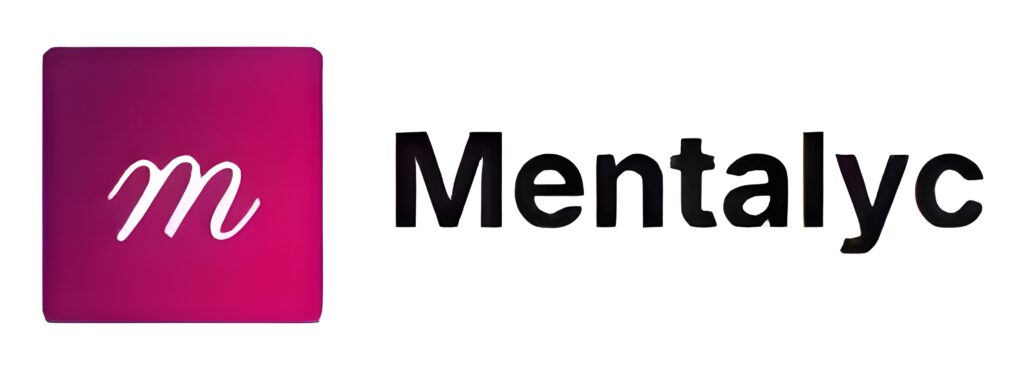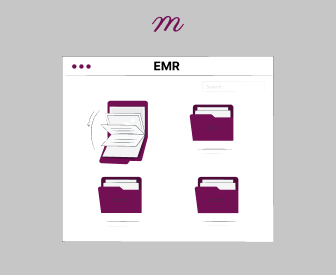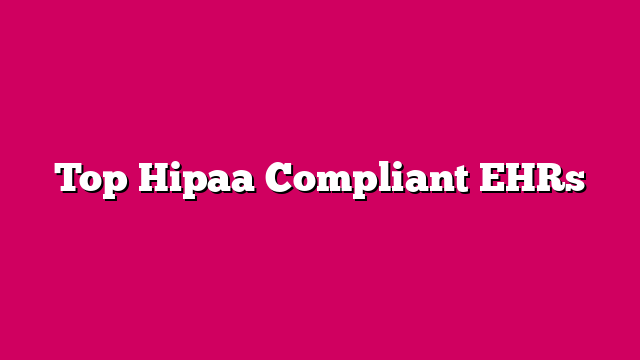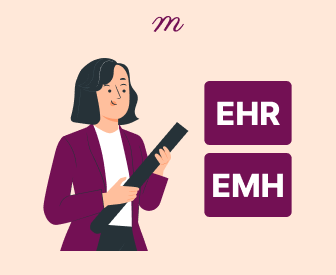Have your progress notes written for you automatically
Behavioral health EMRs are technological solutions for mental healthcare practitioners. These EMRs assist therapists in managing their practice. EMR systems have several features that automate administrative tasks for healthcare practitioners.
There are tons of behavioral health EMRs you can choose from. Before making a choice, you need to know the basic features these EMRs should have and how they can assist you in your practice. In this article, we will explore key features to look for in 2025 as you choose the best behavioral health EMR for your practice.
Key Features of Behavioral Health EMRs To Look For In 2025
Telehealth Integration
Technological advancement has reshaped the delivery of medical services. One of the most remarkable advancements in medical and mental health is telehealth. Telehealth is the use of technology to deliver remote health care to clients. Since its incorporation, it has increased the flexibility and comfort for practitioners and clients.
The integration of telehealth in EMRs has proven to be a much needed development. It allows clients to have sessions with their therapists despite the distance barrier. As a result, your clients don’t need to change therapists because of relocation or vacation. This has greatly reduced costs and increased flexibility. It has also fostered closer mental health monitoring. This regular contact helps therapists to make informed decisions on client treatment.
When choosing a behavioral health EMR with telehealth integration, confirm its appointment scheduling abilities. Ensure that your clients can book appointments from the client portal. Also, confirm that the EMR platform allows you to manage schedules from your calendar. This will reduce the risks of double-booking while improving your efficiency.
Specialized Behavioral Health Templates
Clear and accurate documentation is a vital aspect of mental health practice. As critical as it is, it is one of the most time-consuming aspects of practice. An EMR with behavioral health templates will make documentation easier for you. Some core features the templates should contain include:
- Customizable Clinical Documentation Tools
Due to the diverse treatment approaches in behavioral health, you need an adaptable template. This template should aid you in documenting assessments, and treatment plans. It should also have customizable progress notes for different clients. The fields should have a mix of free-text input, dropdown menus, and checkboxes. These would help simplify documentation while enhancing specificity.
- Standardized Assessment Tools
Behavioral health templates should have integrated assessment tools. Some of the common assessments are Patient Health Questionnaire (PHQ-9) for depression and Generalized Anxiety Disorder 7-Item (GAD-7) for anxiety. Integration of CAGE or AUDIT for substance use disorders will enrich the assessment. Having these tools in your template helps save time during consultation sessions. Additionally, these assessments will provide consistent evaluation metrics for your practice.
- Comprehensive Client Intake and Evaluation Form
The behavioral health EMR should have a robust intake and evaluation form. These forms should capture detailed client information like complaints and medical history. It should also reflect the client's cognitive, emotional, and behavioral functioning.
- Family and Group Progress Note Documentation
Sometimes, behavioral health care involves group and family therapy sessions. Your EMR templates should support group note documentation and attendance. It should also have a section for tracking each client's progress from the group session.
Data Security
Data Security is crucial to healthcare and behavioral health. You are dealing with sensitive information that mustn't be leaked. For the safety of this information, you need an EMR that adheres to data security standards. Some key data security features your behavioral health EMR should have include:
- HIPAA compliance
HIPAA sets the standard for healthcare data privacy and security in the U.S. You need to choose a behavioral Health EMR that complies with this standard. Choosing such an EMR software will guarantee the confidentiality and integrity of your client's data.
- Role-Based Access Control
Role-Based Access Control (RBAC) is a security feature that assigns access based on roles. For example, the accountant needs the billing information, but not the therapy notes. So, they will have access to billing details, but not the therapy notes. EMRs that use RBAC reduce the risk of unauthorized access to data.
- Data Encryption
Data encryption is a process of changing data from plain form to unreadable format. This encrypted data is usually unusable to persons who don't have the decryption key. It is important to encrypt data so that sensitive client details are safe. Most especially, data encryption is key if such data will undergo transmission between devices and cloud storage.
- Audit Trails
Due to the sensitivity of behavioral health data, you need to be able to keep tabs on all actions. You should know when it is viewed, edited, deleted, or transferred. You should also have information about when all these actions are performed on the data.
Audit trails are an effective way to monitor client data. It logs every modification and access to the data. Sometimes, it logs details of the persons and gadgets that modify client data as well. Logs from the audit trails are vital when identifying suspicious behavior.
- Two-Factor Authentication (2FA)
2FA is an extra layer of security that mitigates unauthorized access to records. Before access can be granted, the user needs to provide two means of identification. Most times, it is a mix of hardware identification and biometrics. At other times, they may need to supply a password as well.
Integrated Billing and Claims Management
Behavioral Health EMRs with integrated billing and claims management help simplify administrative tasks. They ensure that all services rendered are properly documented and billed appropriately. Some of the core features the billing and claims management should contain are:
- Automated Healthcare Billing and Coding
Your behavioral health EMR should automate the billing and coding process. This reduces administrative overhead and ensures accuracy. It should also support the automatic assignment of billing codes based on rendered services. Automation of the coding process reduces manual input. This would reduce claim denials caused by coding errors.
- Claim Scrubbing and Error Detection
The EMR billing system should have scrubbing tools. These tools will review claims for errors before submission. For example, it will check for incorrect client data, invalid codes, and missing information. It will also expose discrepancies that can lead to claim denials and rejection. Automatic validation helps you correct issues that could delay the claims processing.
- Integrated Insurance Verification
Insurance verification helps you verify your clients' insurance coverage in real-time. These features give you this information before the therapy sessions begin. As a result, you are not at risk of rendering services that are not covered by the client's insurance. It also helps you in counseling clients about their insurance limitations and co-pays
- Claims Processing and Status Updates
Your EMR should support claims submission to insurance payers after validation. Preferably, the portal should support several payer-specific formats. An EMR with limited payer-specific formats will be an unhealthy restriction for you. You should also check the CMS for a tracking section that displays the claim status i.e. if it has been accepted.
Mobile Accessibility
EMRs have equipped healthcare practitioners to enjoy more flexibility than ever. These platforms enhance remote sessions and on-the-go practice through mobile devices like phones, tablets and laptops. Due to these, it is important to pay attention to the mobile accessibility of your EMR. When choosing a behavioral health EMR, some features you should consider are:
- The User Interface
A great behavioral health EMR with a poor interface is an eyesore. It makes practice difficult and stresses your clients. When choosing a behavioral health EMR, ensure the interface is clean, easy to use and intuitive. This will collapse the learning curve for you and your clients. Also, confirm its compatibility with smaller devices like mobile phones. Its compatibility with mobile phones will be useful when retrieving client data on the go.
- Real-Time Synchronization
Real-time synchronization ensures that data across different devices gets updated simultaneously. This is important because of the nature of healthcare practice. It would be dangerous for you to attend to clients with outdated information. Hence, you need the treatment plans, progress notes, and client details to be updated.
- Appointment Management and Reminders
Appointment scheduling and reminders are important in behavioral health EMRs. They help you manage your schedule and confirm appointments. You will also receive appointment notifications and reminders on your device. The EMR should also be able to send reminders to your clients, so they don’t miss confirmed appointments.
- Collaboration Tools
Behavioral health often cuts across several health disciplines. These could range from psychiatrists to therapists, social workers, and case managers. Your mobile EMR should foster communication among the different teams of healthcare workers. It should contain tools for messaging, task assignment, and note sharing.
- Client Portal
The EMR should have a client portal that allows clients to relate with their therapists. Clients should be able to track their progress and schedule appointments. The portal should also allow them to view their treatment plans. Access to their treatment plans will help them understand their mental health status better ad enable easier follow-up sessions. Incorporation of a section for educational materials will be a welcome development. This in turn reduces the workload of therapists.
Conclusion
There are several EMRs available, but a behavioral health EMR will be better for your practice as a therapist. EMRs for behavioral health are optimized to meet the needs of mental health practitioners. They save you time, and effort while providing excellent client care.
FAQs
What Is The Difference Between Behavioral Health EMRs and General EMRs?
Unlike general EMRs, behavioral health EMRs are customized for behavioral health practices. They have extra features like psychotherapy notes, treatment plans, and outcome tracking. Sometimes, they support evidence-based therapy – a feature that general EMRs lack.
Do Behavioral EMRs Have Documentation Templates?
Behavioral health EMRs are out to make practice easier for mental health professionals. These EMR software have several customizable templates for progress notes and treatment plans. You also have access to customizable templates for discharge summaries and evaluations. Within a short time, you can adapt these templates to suit your practice needs.
Can I Monitor Treatment Goals And Track Client Progress With Behavioral Health EMRs?
Behavioral health EMRs allow therapists to create, update, and track treatment goals. This helps them to make data-driven decisions about clients. They can also use such data to adjust client treatment plans when necessary.
Is Telehealth Integrated In EMRs?
Several behavioral health EMRs support telehealth functionalities. Some offer integrated telehealth while others provide the service as an add-on. EMRs that provide telehealth as an add-on often require extra subscription fees.
Do EMRs Support Insurance Billing and Claim Submissions?
Several behavioral health EMRs support integrated insurance billing and claims submissions.
How Safe Are Client Data With EMRs?
Many EMRs are HIPAA-compliant. They make use of data encryption, access controls, and edit trails. This ensures that unauthorized persons do not have access to client data.








